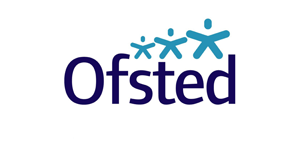Feedback in Coaching

Strengthening Insight, Trust and Performance
This compilation is an educational resource developed by the British School of Coaching. This series is compiled as a foundational resource for coaches in training. Each article introduces a practical coaching tool or model, grounded in theory and supported by real-world application. Whether you’re preparing for ILM coaching qualifications or looking to deepen your understanding of best practice in coaching, this series offers research-informed insights to strengthen your coaching toolkit.
Feedback is one of the most powerful tools in coaching. When delivered skillfully, it strengthens relationships, builds awareness, and supports sustained behaviour change. Yet, if handled poorly, feedback can trigger defensiveness, confusion, or even damage the coaching relationship.
This article explores how to give (and invite) feedback in ways that are clear, constructive, and aligned with coaching ethics and best practice.
Why Feedback Matters
Feedback serves multiple purposes in coaching:
- It helps the coachee understand the impact of their behaviour
- It supports the coach in checking assumptions and staying aligned with the coachee’s goals
- It reinforces progress and learning
- It builds trust through honest, respectful communication
Feedback is also the only way we can confirm whether the message we intended to give was actually received.
The Golden Rules of Giving Feedback
Based on Hill’s coaching principles, here are 10 guiding practices to make feedback effective, meaningful, and safe:
- Find out what the coachee is trying to achieve – Align feedback with their goals.
- Earn the right to give feedback – Build rapport by recognising achievements, not just pointing out weaknesses.
- Check your role in what you observe – Consider how your presence or the environment influences the coachee’s behaviour.
- Connect feedback to what matters to the coachee – Make it relevant, not just procedural.
- Be willing to abandon your agenda – Prioritise the client’s needs over your script.
- Ask the coachee to self-assess first – Invite reflection before giving input.
- Focus on behaviours and consequences – Describe the action and its impact, not the person.
- Model thoughtful silence – Allow space for the coachee to respond and process.
- Stay flexible – Define the desired outcome, but let the coachee choose how to get there.
- Set the feedback contract – Ask: “What kind of coach do you want me to be?” This creates a shared agreement on how feedback will be given.
Positive vs. Constructive Feedback
Coaching feedback typically falls into two categories:
- Positive Feedback – Reinforces what’s working. Regular praise helps maintain motivation and confidence.
- Constructive Feedback – Focuses on improvement. It must be objective, specific, and always linked to actionable behaviours.
Both are essential. Feedback must be balanced, timely, and purpose-driven—not reactionary or overly critical.
Six Steps for Giving Constructive Feedback (Hill, 2012)
- Identify the goal or intention behind the coachee’s behaviour
- Describe what you observed, clearly and factually
- Share the impact the behaviour had, on others or the outcome
- Invite reflection – ask for their perspective
- Offer support and possible solutions
- Agree on next steps and a commitment to change
Common Barriers to Feedback
Even experienced coaches encounter barriers, including:
- Feedback comes as a surprise or feels misaligned with the coachee’s goals
- The coachee perceives judgement instead of observation
- The coach lacks credibility on the issue being discussed
- The coach feels nervous or unprepared to raise a difficult point
These barriers can be overcome with preparation, contracting, and reflective practice.
Guidelines for Effective Coaching Feedback
To ensure feedback is truly useful, consider the following:
✅ Give feedback with care – your intention should always be to support, not to criticise
✅ Pay attention to how the coachee responds – adapt as needed
✅ Invite feedback – let the coachee guide part of the conversation
✅ Be specific – focus on what was said or done, not assumptions about motives
✅ Include impact – share both feelings and facts
✅ Avoid judgement – descriptive language is more helpful than evaluative labels
✅ Be timely – give feedback close to the event for relevance and clarity
✅ Make it actionable – focus on behaviours the coachee can change
✅ Balance – always anchor feedback in what the coachee is aiming to achieve
Conclusion
Feedback in coaching is not about giving answers or correcting performance. It’s about partnering in reflection, aligning actions with intentions, and fostering meaningful change. When delivered with care, curiosity, and clarity, feedback becomes one of the most transformational tools in a coach’s practice.
References:
- Hill, L.A. (2010). Becoming a Manager: How New Managers Master the Challenges of Leadership. Harvard Business Review Press.
- Starr, J. (2021). The Coaching Manual. 5th ed. Pearson.
- Rogers, J. (2021). Coaching Skills: A Handbook. 5th ed. Open University Press.






